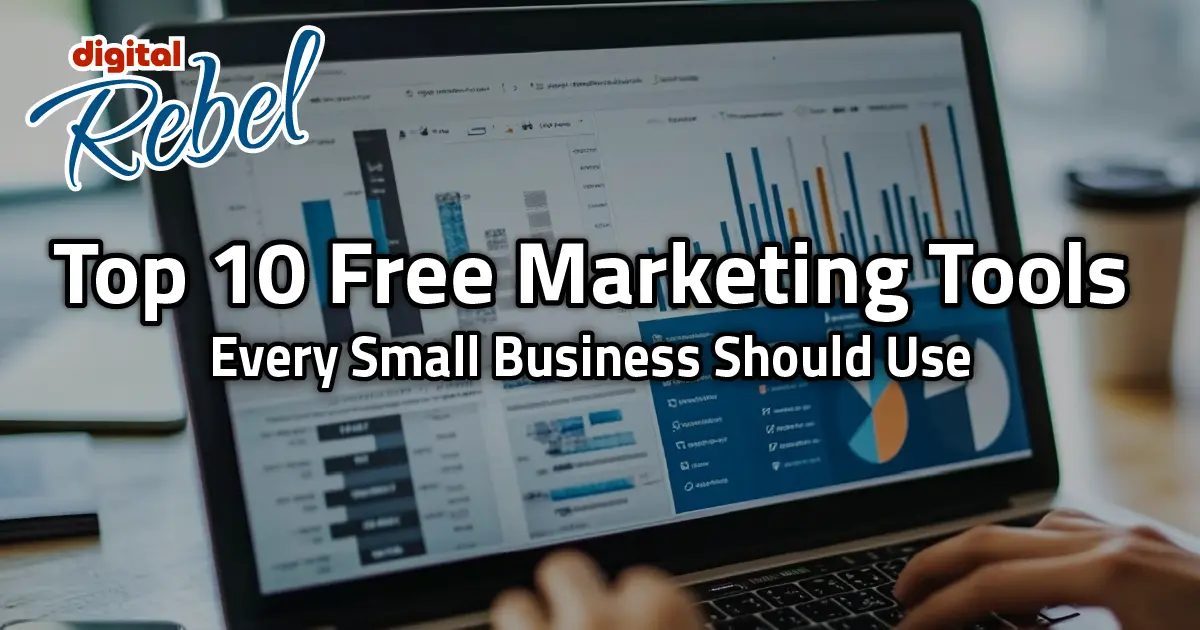Navigating the Noise:
Choosing the Right MarTech Stack
Less tech clutter, more performance. Here's how to pick tools that work as hard as your team does.
- Home >
- Marketing Strategies & Perspectives >
- Building the Right MarTech Stack
MarTech Bloat Is Real - and It’s Costing You

Most marketing teams are sitting on a stack of tools that looks more like a digital junk drawer than a strategic system. From abandoned AB testing platforms to dusty automation tools that haven’t seen action since the last reorg - it’s chaos.
Leadership feels it in the budget. Teams feel it in burnout. And customers? They feel it in inconsistent experiences and missed touchpoints.
So how do you go from tool overload to a lean, aligned, and ROI-driven MarTech stack? Let’s break it down.

Start with Strategy, Not Software
Your tech should support your goals - not define them. That means getting brutally clear on what you actually need:
- Are you trying to scale content production?
- Improve lead quality?
- Streamline campaign tracking?
- Increase conversion rates?
Document those objectives first. Every tool you evaluate should be mapped directly to a business goal or workflow.
Pro Tip: Run a quick “Does this tool help us generate or optimize revenue?” gut check before adding anything new.
The Tech Fatigue Is Real - for Everyone
It’s not just about cost. Overstacking your tech leads to:
- Low adoption rates (your team won’t use tools they don’t understand)
- Redundant features (why are you paying for three platforms that all offer email segmentation?)
- Disconnected data (when tools don’t talk, insights fall apart)
Worse? Teams spend more time managing tools than marketing.
How to Audit Your Existing Stack (Without Going Down a Rabbit Hole)

- List everything: Include all licensed tools, free plug-ins, and homegrown platforms.
- Categorize by function: Group by use - analytics, CRM, automation, social, etc.
- Score for impact vs. effort:
- High Impact + Low Effort = Keep & optimize
- Low Impact + High Effort = Ditch or consolidate
- Survey your team: What tools do they love? What’s collecting digital dust?
Integration > Individual Features
Don’t get dazzled by flashy dashboards. What matters most is how your tools work together. Look for:
- Native integrations with your CMS, CRM, and analytics platforms
- Open APIs for custom workflows
- Centralized dashboards for full-funnel visibility
If your tools can’t talk to each other, your data - and your strategy - will suffer.

Choose Scalable, Not Shiny
It’s tempting to grab the latest AI-powered, buzzword-fueled tool of the month. But here’s what actually scales:
- Tools with modular features that grow with your team
- Flexible pricing tiers (great for fast-growing orgs)
- Strong onboarding + support (so your team doesn’t rage-quit before implementation)
Final Word: Stack Smarter, Not Bigger
A right-sized MarTech stack reduces overwhelm, boosts adoption, and turns marketing from a cost center into a revenue engine. It’s not about having more tools - it’s about having the right ones.
Ready to audit your MarTech stack and map it to real KPIs?
We’ll help you cut the fluff and build a system that delivers.
MarTech Stack FAQ: Beyond the Basics
Speak their language: ROI, efficiency, and risk mitigation. Present clear data on how the tool will reduce costs, automate time-consuming tasks, or improve customer acquisition. Bonus points for showing how it aligns with quarterly business goals or revenue KPIs.
Think of a stack as your full ecosystem - a combination of tools working together. A platform is a core piece of that stack, often an all-in-one solution (like HubSpot or Salesforce) that other tools plug into. Stacks are flexible; platforms are foundational.
Depends on your complexity. Bundled solutions are great for small teams that need simplicity. Custom stacks offer more flexibility and power, but require stronger internal resources and integration skills. If you’re scaling fast, custom usually wins long-term.
It’s more common than you think. Always:
- Keep a backup plan for critical tools
- Stay in vendor communities or forums for early intel
- Design your stack with modularity in mind - so you can swap tools without unraveling the whole system
Related Marketing Strategies & Perspectives

Scale Paid Ads Without Blowing Your Budget
Scaling ads? Focus on what works, target smarter, and test everything. Learn how to grow your ad campaigns without overspending.

Top 10 Free Small Business Marketing Tools
The top 10 free marketing tools every small business should use to streamline marketing, boost SEO, and grow your brand.

Predictive Analytics vs. Reactive Marketing
Tired of chasing trends? Learn how predictive analytics can help you stay ahead of customer behavior and optimize your marketing strategy.
About Digital Rebel Marketing
Digital Rebel Marketing is dedicated to empowering businesses to 'Be the Answer' by prioritizing organic SEO, Answer Engine Optimization (AEO), and high-impact digital strategies. As a Texas-based agency serving clients across the U.S., we bring Texas-sized dedication and expertise to businesses nationwide, helping them break free from costly ad-driven marketing and build sustainable online success.
Rooted in the vibrant and diverse business landscape of West-Central Texas and the Texas Hill Country, our reach extends coast to coast, offering tailored website design, AEO, SEO, and marketing technology services. We understand the unique challenges of different industries and regions, delivering customized, data-backed strategies that ensure our clients don’t just get found - but get chosen.
At Digital Rebel Marketing, we don’t believe in cookie-cutter solutions. We focus on smart, effective marketing that drives real growth - no fluff, no BS - just results.